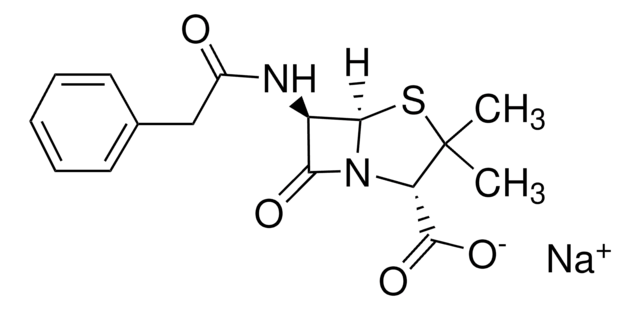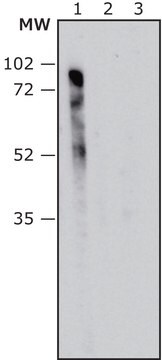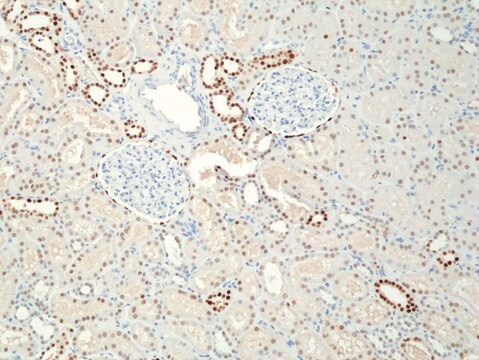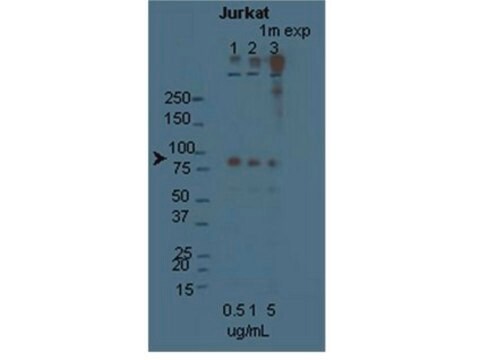ABS984
Anti-Intersectin-1 Antibody
serum, from rabbit
Synonym(s):
ITSN-1, ITSN1, Intersectin-1, Intersectin1, ITSN 1
Sign Into View Organizational & Contract Pricing
Select a Size
All Photos(1)
Select a Size
Change View
About This Item
UNSPSC Code:
12352203
eCl@ss:
32160702
NACRES:
NA.41
Recommended Products
biological source
rabbit
Quality Level
antibody form
serum
antibody product type
primary antibodies
clone
polyclonal
species reactivity
mouse, human, rat
technique(s)
immunocytochemistry: suitable
immunoprecipitation (IP): suitable
western blot: suitable
NCBI accession no.
UniProt accession no.
shipped in
dry ice
General description
Intersectin-1 is a scaffolding protein facilitating clathrin-mediated endocytosis, vesicle trafficking and mitogen-activated protein kinase (MAPK) signaling pathways. Functional association studies of the protein have suggested ITSN1 has several differing roles in various processes such as RAS activation and stimulation of Cdc42 in order to accelerate actin assembly. Alternative splicing produces 4 isoforms. The major isoforms are ITSN1-L and ITSN1-S. Expression for ITSN1 is ubiquitous in adult/fetal tissue, except isoform 1 which is mostly found in the brain. The most notable expression is found in muscle, spleen, skeletal muscle, testis, heart, ovary and all fetal tissue. Additionly, the neurons of young Down Syndrome and pre-Alzheimer’s disease brains are predisposed for enlarged early endosomes which may contribute to these pathological processes.
Immunogen
Epitope: SH3 domain of Xenopus Intersectin-1 protein
GST-tagged recombinant protein corresponding to the SH3 domain of Xenopus Intersectin-1.
Application
Anti-Intersectin-1 is an antibody against Intersectin-1 for use in WB, ICC, IP.
Immunocytochemistry Analysis: A representative lot of this antibody detected Intersectin-1 protein in HEK293T cells (Martin, N., et al. Mol Pharmacol 70:1643–1653, 2006)
Immunoprecipitation Analysis: A representative lot of this antibody immunoprecipiated Intersectin-1 (short and long isoforms) from mouse brain lysate (Martin, N., et al. Mol Pharmacol 70:1643–1653, 2006)
Immunoprecipitation Analysis: A representative lot of this antibody immunoprecipiated Intersectin-1 (short and long isoforms) from mouse brain lysate (Martin, N., et al. Mol Pharmacol 70:1643–1653, 2006)
Quality
Evaluated by Western Blotting on rat brain cytosol tissue lysate
Western Blotting Analysis: A 1:1000 dilution of this antibody detected Intersectin-1 protein in 10 µg of rat brain cytosol.
Western Blotting Analysis: A 1:1000 dilution of this antibody detected Intersectin-1 protein in 10 µg of rat brain cytosol.
Target description
~150 and ~200 kDa observed. Previous publication indicated the 200 kDa to be the long isoform and 150 kDa to be the short isoform (Okur, M., et al. Mol. Cell. Biol. 2014, 34(2):271). Uncharacterized bands may be detected at high antibody concentrations or longer exposures.
Other Notes
Concentration: Please refer to lot specific datasheet.
Not finding the right product?
Try our Product Selector Tool.
Storage Class Code
10 - Combustible liquids
WGK
WGK 1
Certificates of Analysis (COA)
Search for Certificates of Analysis (COA) by entering the products Lot/Batch Number. Lot and Batch Numbers can be found on a product’s label following the words ‘Lot’ or ‘Batch’.
Already Own This Product?
Find documentation for the products that you have recently purchased in the Document Library.
Intersectin regulates epidermal growth factor receptor endocytosis, ubiquitylation, and signaling.
Martin, NP; Mohney, RP; Dunn, S; Das, M; Scappini, E; O'Bryan, JP
Molecular Pharmacology null
Mustafa Nazir Okur et al.
Molecular and cellular biology, 34(2), 271-279 (2013-11-13)
Ubiquitylation of receptor tyrosine kinases (RTKs) regulates their trafficking and lysosomal degradation. The multidomain scaffolding protein intersectin 1 (ITSN1) is an important regulator of this process. ITSN1 stimulates ubiquitylation of the epidermal growth factor receptor (EGFR) through enhancing the activity
Our team of scientists has experience in all areas of research including Life Science, Material Science, Chemical Synthesis, Chromatography, Analytical and many others.
Contact Technical Service








